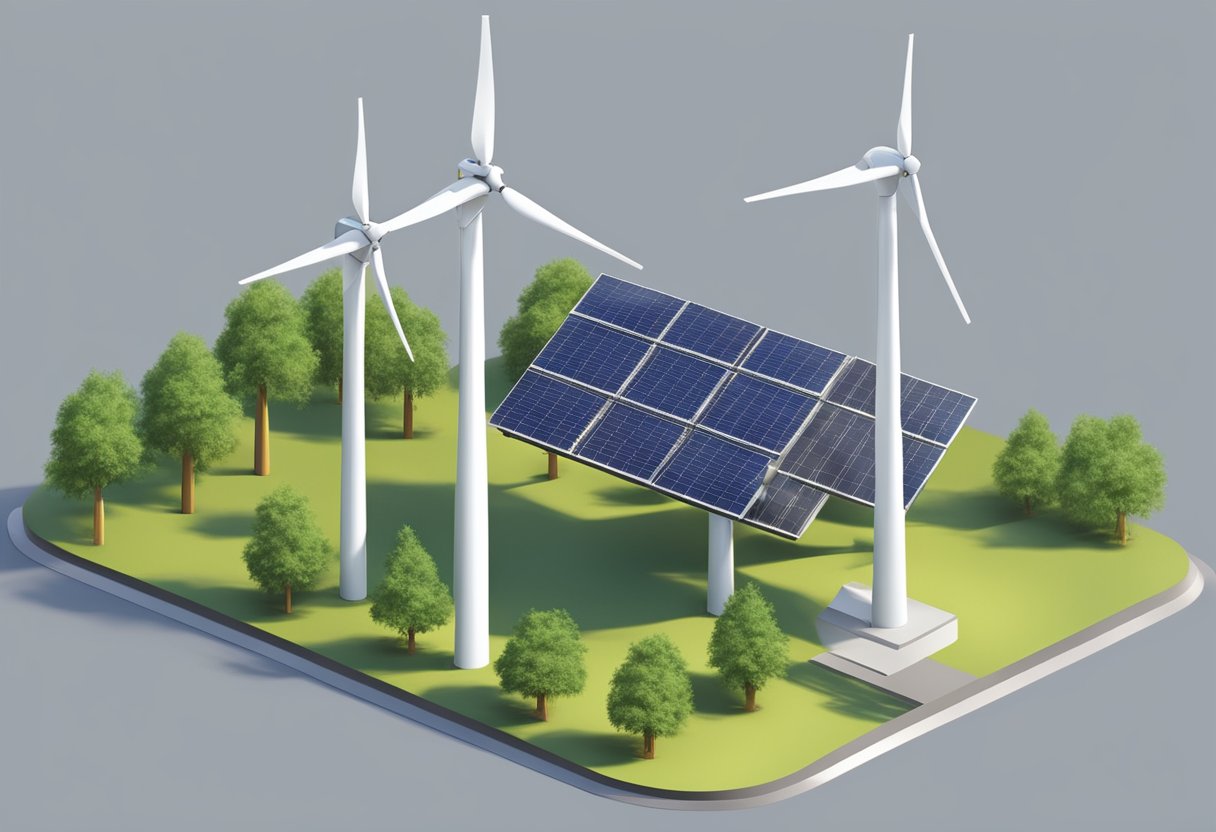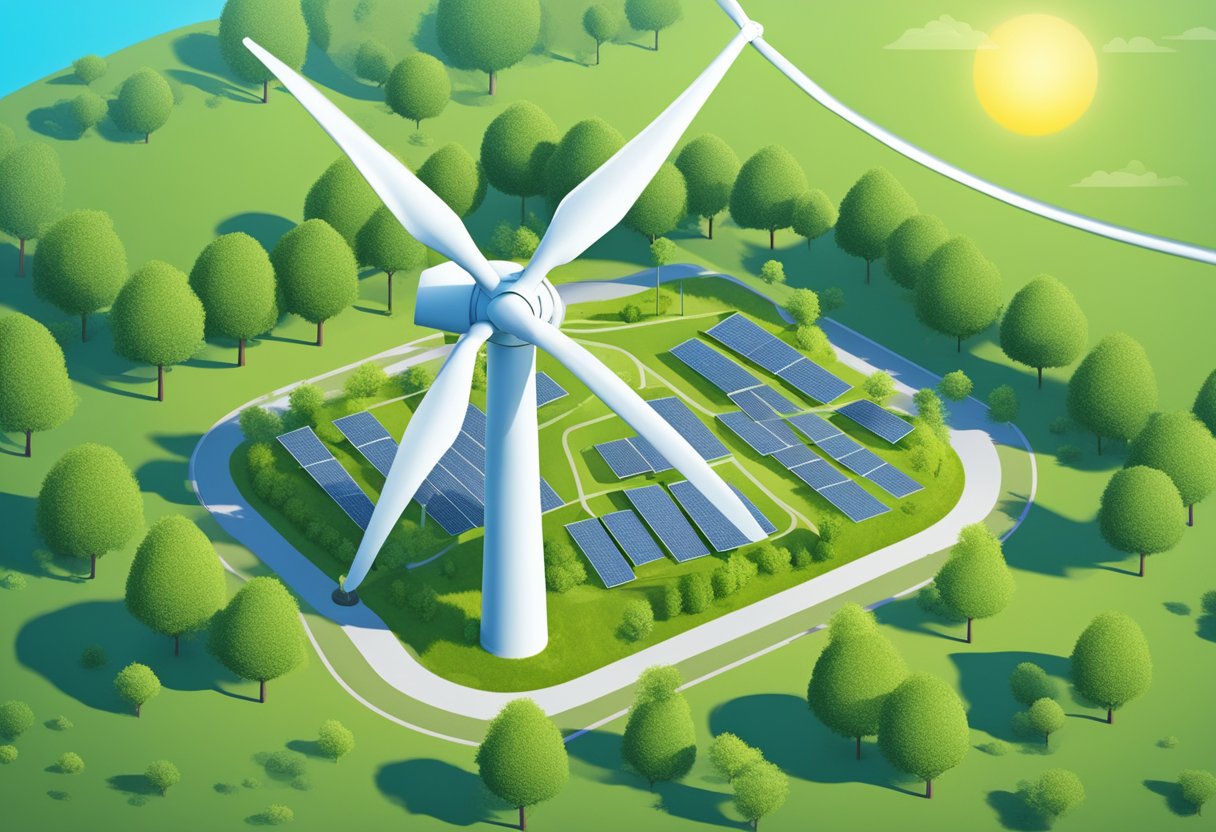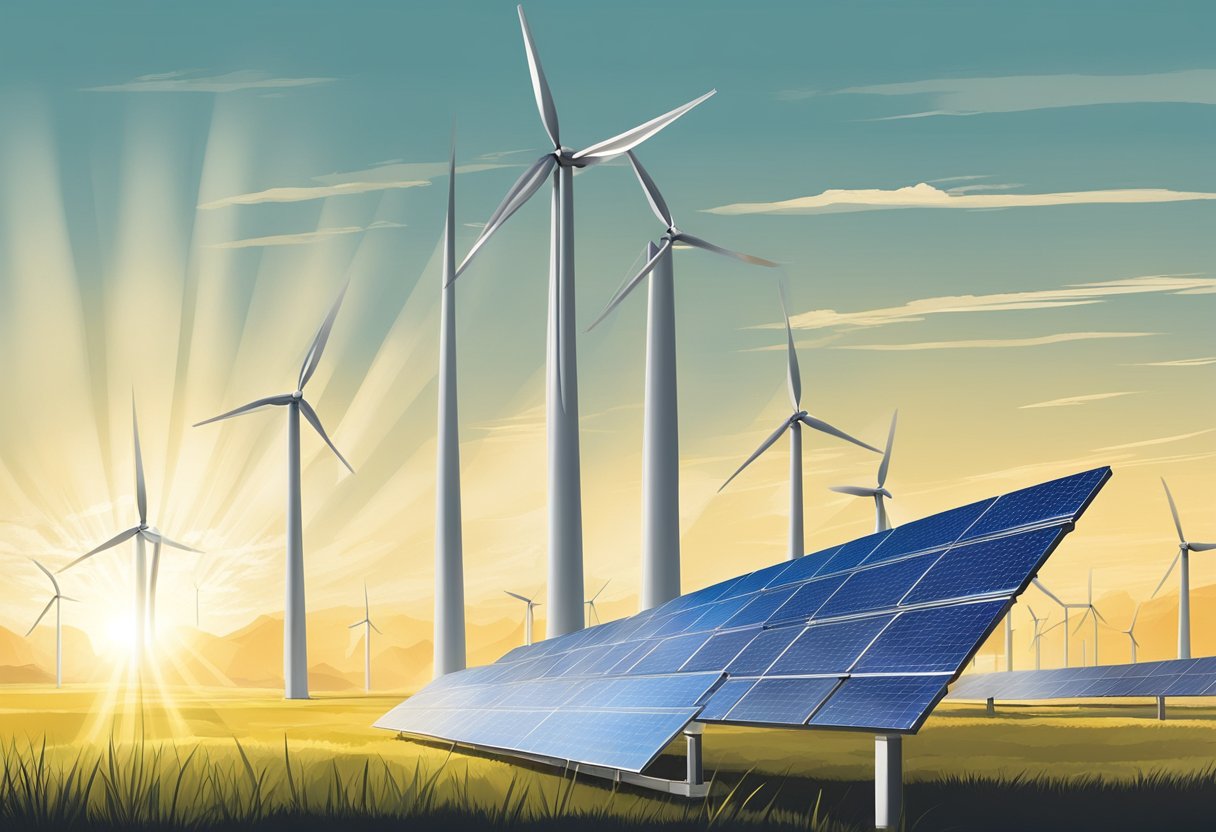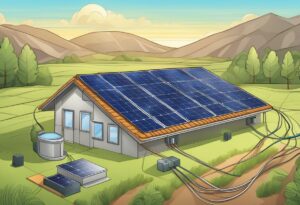Wind and solar power are two of the most popular renewable energy sources used today. Both technologies have unique advantages and disadvantages, but when combined, they can offer a more reliable and efficient energy solution.
The question is, can you combine wind and solar tower? The answer is yes, and it’s becoming increasingly popular.
Fundamentally, wind and solar power work in different ways. Wind turbines generate electricity by harnessing the kinetic energy of the wind, while solar panels convert sunlight into electrical energy.
Combining the two technologies provides a more consistent, reliable power source. When the wind is not blowing, solar panels can still produce electricity, and vice versa.
This means that the combination of wind and solar power can provide a more stable and predictable energy supply.
Combining wind and solar technologies is not a new concept. In fact, it has been around for many years, and there are already many successful examples of hybrid wind and solar systems. However, there are still challenges to overcome, such as integration and energy storage solutions, as well as environmental and economic considerations.
Despite these challenges, the benefits of combining wind and solar technologies are clear, and it is likely that we will see more hybrid systems in the future.
Key Takeaways
- Wind and solar power can be combined to provide a more reliable and efficient energy solution.
- Hybrid wind and solar systems have been around for many years and have already proven successful.
- Although there are still challenges to overcome, the benefits of combining wind and solar technologies are clear.
Fundamentals of Wind and Solar Power
Wind Energy Basics
Wind energy is a renewable source of energy that is generated by converting the kinetic energy of wind into electrical energy.
Wind turbines are used to capture the energy in the wind and convert it into electricity. The blades of a wind turbine are designed to spin when the wind blows, which in turn rotates a generator to produce electricity.
The amount of energy that can be generated by a wind turbine depends on a number of factors, including the wind speed, the size of the turbine, and the efficiency of the turbine.
The wind speed is the most important factor, as the amount of energy that can be generated by a wind turbine increases with the cube of the wind speed.
Solar Energy Basics
Solar energy is a renewable source of energy that is generated by converting the energy from the sun into electrical energy.
Solar panels, also known as photovoltaic (PV) panels, are used to capture the energy from the sun and convert it into electricity.
When sunlight hits a solar panel, it is absorbed by the panel’s photovoltaic cells, which convert the energy from the sun into electrical energy.
The amount of energy that can be generated by a solar panel depends on a number of factors, including the amount of sunlight that hits the panel, the size of the panel, and the efficiency of the panel.
Wind and solar power are complementary sources of energy, as they often produce energy at different times. Wind power is typically strongest at night and during the winter months, while solar power is strongest during the day and during the summer months.
This means that by combining wind and solar power, it is possible to create a more reliable and consistent source of renewable energy.
By understanding the fundamentals of wind and solar power, we can better appreciate the benefits of combining these two sources of energy to create a more sustainable future.
Combining Wind and Solar Technologies
Hybrid Systems Overview
Combining wind and solar technologies in a hybrid system can result in a more efficient and reliable renewable energy source.
Hybrid systems leverage the complementary nature of wind and solar energy, optimizing their performance and output. By combining the two, the system can produce electricity even when one source is not available due to weather conditions.
Hybrid systems offer a compelling solution to address the limitations and enhance the benefits of both wind and solar sources.
One of the primary benefits of hybrid systems is the ability to maximize energy output and reduce downtime. When windspeed is lower, solar output is higher and vice versa, allowing for a consistent power supply.
Wind-Solar Hybrid System Components
A wind-solar hybrid system consists of several components, including wind turbines, solar panels, batteries, and inverters.
The wind turbines and solar panels work together to generate electricity, which is then stored in batteries. The inverters convert the DC power stored in the batteries to AC power, which can be used to power homes, businesses, and other applications.
The table below summarizes the components of a wind-solar hybrid system:
| Component | Description |
|---|---|
| Wind turbines | Convert wind energy into electricity |
| Solar panels | Convert solar energy into electricity |
| Batteries | Store excess electricity generated by wind and solar sources |
| Inverters | Convert DC power stored in batteries to AC power |
Wind-solar hybrid systems are becoming increasingly popular due to their ability to provide a reliable and consistent source of renewable energy.
They are particularly useful in areas with fluctuating wind and solar conditions, as they can provide a consistent power supply. Additionally, hybrid systems can reduce the reliance on fossil fuels and help to mitigate the impact of climate change.
Integration and Energy Storage Solutions

Battery Storage Technologies
Integrating wind and solar power can provide a more sustainable and reliable energy source. However, one of the challenges of this integration is the variability of these renewable sources.
This variability can be addressed by using battery storage technologies to store excess energy during times of high production and release it during times of low production.
There are various types of battery storage technologies available, such as lithium-ion, lead-acid, and flow batteries.
Lithium-ion batteries are the most commonly used type of battery storage technology for renewable energy systems due to their high energy density, long cycle life, and low maintenance.
Lead-acid batteries are a less expensive option but have a shorter lifespan and lower energy density. Flow batteries, on the other hand, have a longer lifespan and higher energy density but are more expensive.
Grid Integration and Net Metering
Grid integration is another important aspect of combining wind and solar power. A well-integrated grid can ensure that excess energy produced by renewable sources is not wasted and is instead fed back into the grid for use by other consumers.
Net metering is a policy that allows consumers to receive credits for excess energy they produce and feed back into the grid.
Grid integration and net metering policies vary by location, and it is important to research the policies in your area before integrating wind and solar power.
In some locations, net metering policies may be less favorable, making it more difficult to receive credits for excess energy produced. In other locations, grid integration may be more challenging due to limitations in the existing infrastructure.
Challenges and Reliability

Wind and solar power are two of the most popular renewable energy sources. They are complementary in nature and can be combined to create a hybrid system that maximizes energy production and reliability. However, there are several challenges associated with combining these two sources of energy.
Weather and Climate Impact
One of the biggest challenges of combining wind and solar power is the impact of weather and climate.
Wind turbines are more productive during the night and in colder months, coinciding with low solar irradiance. Solar panels, on the other hand, are more productive during the day and in warmer months.
This means that a hybrid system needs to be designed to take into account the seasonal and daily variations in wind and solar energy.
Intermittency and Storage Capacity
Another challenge of combining wind and solar power is the intermittent nature of these sources of energy.
Wind and solar power are dependent on weather conditions and can fluctuate throughout the day. This makes it difficult to rely on these sources of energy for a consistent and stable power output.
To overcome this challenge, a hybrid system needs to have sufficient storage capacity to store excess energy generated during peak production periods. This stored energy can then be used during periods of low production.
Environmental and Economic Considerations
Reducing Carbon Emissions

Combining wind and solar energy is a sustainable solution that can help reduce carbon emissions.
Wind and solar energy systems are complementary in nature, and when combined, they can offer a more reliable and efficient energy source. Wind turbines generate energy when there is wind, while solar panels produce energy when there is sunlight.
This means that a hybrid system can produce energy throughout the day and night, regardless of the weather conditions. By reducing the reliance on fossil fuels, hybrid systems can help cut greenhouse gas emissions, which can have a positive impact on the environment.
Costs and Incentives
Hybrid systems can be more expensive to install than single-source systems, but they can also offer a higher return on investment in the long run.
The costs of wind and solar energy have decreased significantly in recent years, making hybrid systems more affordable.
Additionally, there are several incentives available for businesses and homeowners who invest in renewable energy.
For example, the federal government offers tax credits for renewable energy systems, and some states offer rebates and other incentives.
By taking advantage of these incentives, the costs of installing a hybrid system can be significantly reduced.
In terms of electricity costs, hybrid systems can help reduce energy bills by generating energy from renewable sources.
By reducing reliance on the grid, businesses and homeowners can save money on their electricity bills.
Additionally, by generating energy from renewable sources, businesses and homeowners can insulate themselves from fluctuations in energy prices, which can be volatile.



